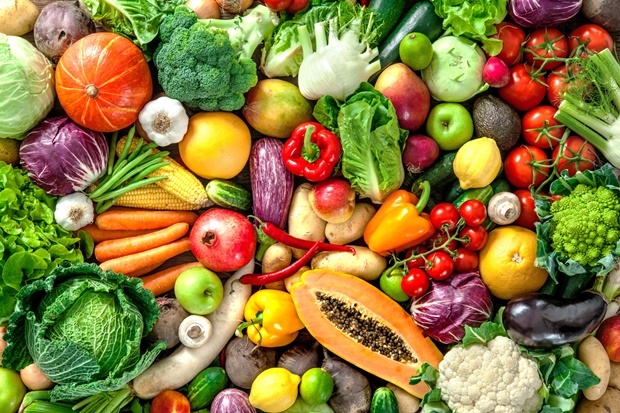Half the people on one study halved the number of migraines they had each month.
Daily Archives: 29/11/2017
Nature’s blueprint for fracture-resistant cement
[unable to retrieve full-text content]

Sea-level rise predicted to threaten more than 13,000 archaeological sites in southeastern US
[unable to retrieve full-text content]

Prehistoric women had stronger arms than today’s elite rowing crews
[unable to retrieve full-text content]

Health24.com | 5 rules for weight training nutrition
Weight training is vital to build muscle mass, strengthen your bones and decrease your body fat percentage. But you should also be mindful of what you eat to reap the benefits of weight training. Make sure you are following these five nutrition tips to get the most out of your weight training.
1. Do not skip breakfast
A healthy breakfast is important to fire up your metabolism and prevent cravings later during the day. You will also have more energy during the day and for your workout. Don’t expect your body to perform if you are not giving it the proper nutrients. Be sure to include protein in your breakfast to keep you satisfied for longer. Good examples are omelettes, cottage cheese, or plain yogurt.
2. Eat every three hours…
When trying to build muscle, it’s important to keep your metabolism going and not get to the point of starvation. The faster your metabolic rate, the easier you will be able to burn fat and make way for lean muscle. Regular snacking also helps with muscle repair and will give you enough energy for your weight lifting workout. Include protein with every meal, as studies have shown that it can increase your metabolism.
3. …but be mindful of when you eat what
A balanced diet is key for any workout plan to be effective, but it’s also important to get the timing right to make your workout as beneficial as possible. Know when to eat what, and it can benefit the quality of your workout, as well as the repair and building of your muscles afterwards. Carbohydrates serve as a great source of fuel before a workout, while protein after a workout helps speed up muscle recovery and is essential for tissue growth and repair.
4. Incorporate fresh fruits and vegetables in your meals
Fruit such as berries and leafy green vegetables like spinach are especially rich in antioxidants. Without these nutrients, your immune system is compromised and your energy levels are low. Antioxidants are chemicals important for fighting free radicals, which cause the decaying of cells. Without these antioxidants, your cells can’t rejuvenate and therefore your muscles can’t repair and build as efficiently. Another reason why fruit and vegetables are so important in a weight training diet is because they are filled with fibre that keeps you fuller and energised for longer without adding additional calories.
5. Eat healthy fats
Not all fats are good for the body, but unsaturated fats are vital for healthy cholesterol levels and heart health. To build muscle and lose fat, it’s also important to incorporate sources of healthy fats in your diet, since eating fats keeps the body’s overall functions working and can ultimately help with fat loss. Healthy fats are also important for overall muscle build and repair, since fats assist important bodily functions that aid repair. Incorporate good fats such as nuts, seeds, olive oil, avocado and oily fish in your diet.
This article is provided through a sponsorship from Pfizer in the interests of continuous medical education. Notwithstanding Pfizer’s sponsorship of this publication, neither Pfizer nor its subsidiary or affiliated companies shall be liable for any damages, claims, liabilities, costs or obligations arising from the misuse of the information provided in this publication. Readers are advised to consult their health care practitioner for specific information on personal health matters as this is not the intention or purpose of the publication. Specific medical advice or recommendations on the clinical management of patients will not be provided by Pfizer. In this regard Pfizer does not support the use of products for off label indications, nor dosing which falls outside the approved label recommendations and readers must refer to the Package Insert of any product for full prescribing guidelines.

‘Serious concerns’ voiced over stillbirth documentary filming
“Serious concerns” are raised over the filming of a TV documentary about stillbirths at a hospital.
Health24.com | These are the real culprits behind 800 000 cases of cancer
Nearly 6% of new cancers diagnosed worldwide in 2012 – some 800 000 cases – were caused by diabetes and excess weight, according to a study.
Among the 12 types of cancer examined, the percentage of cases chalked up to these factors was as high as a third, researchers reported in The Lancet Diabetes & Endocrinology, a leading medical journal.
Link between cancer and diabetes
Cancers stemming from diabetes and obesity combined was almost twice as common among women than men, they found.
And of the two cancer-causing agents, being overweight or obese – above 25 on the body-mass index, or BMI – was responsible for twice as many cancers as diabetes.
The conditions, in reality, are often found together, as obesity is itself a leading risk factor for diabetes.
“While obesity has been associated with cancer for some time, the link between diabetes and cancer has only been established quite recently,” said lead author Jonathan Pearson-Stuttard, a clinical research fellow at Imperial College London’s Faculty of Medicine.
“Our study shows that diabetes – either on its own or combined with being overweight – is responsible for hundreds of thousands of cancer cases each year across the world.”
A surge in both conditions over the last four decades has made the tally significantly worse, the study showed.
Check your BMI
The global increase in diabetes between 1980 and 2002 accounted for a quarter of the 800 000 cases, while the obesity epidemic over the same period resulted in an additional 30% of cases.
On current trends, the share of cancers attributable to the two conditions will increase by 30% for women and 20% for men in less than 20 years, the researchers warned.
“In the past, smoking was by far the major risk factor for cancer, but now healthcare professionals should also be aware that patients who have diabetes or are overweight also have an increased risk,” Pearson-Stuttard, said.
For men, obesity and diabetes accounted for a more than 40% of liver cancers, while for women they were responsible for a third of uterine cancers, and nearly as many cases of breast cancer.
The threshold for obesity is a BMI – one’s weight in kilos divided by one’s height (in centimetres) squared – of 30.
Persons with a BMI of 25 to 29.9 are considered to be overweight.
Image credit: iStock

Health24.com | 3 gross things that happen to your face when you drink and smoke
The health effects of too much drinking and smoking are major. Everything from cancer to heart disease to stroke have been linked to those bad habits.
If that’s not enough to make you quit, well, we’ll appeal to your vanity instead: Excessive drinking and smoking can make you look way older than you really are, according to new research published in the Journal of Epidemiology & Community Health.
Read more: Study: smoking cigarettes causes one third of all cancer deaths (not just lung cancer!)
In the study, researchers quizzed more than 11 000 people on their smoking and drinking habits, and then had medical pros perform physical exams on them over the course of 12 years.
They were looking for four specific, visible signs of ageing: earlobe creases, arcus corneae, (a greyish ring around the corneas in your eye), xanthelasmata (yellowish plaques on your eyelids) and male pattern baldness.
The results? The more cigs guys smoked – and the more years they lit up for – the more likely they were to develop three of those visible signs, including grey rings around their corneas, the creases on their earlobes and the plaques on their eyelids.
There was no consistent link between drinking and smoking and male pattern baldness, probably because your genetic predisposition and male hormone levels play a greater role in that, the researchers say.
Read more: How eating curry could undo the effects of smoking
In fact, men who smoked the most had more than double the odds of getting the yellowish plaques above their peepers than non-smokers did.
Guys who were heavy drinkers – meaning they drank more than 35 drinks a week – were 35% more likely to develop the grey rings in their eyes than those who drank fewer than seven.
Those who drank 21 to 28 drinks a week were also 26% more likely to get earlobe creases than those who limited their booze to seven drinks a week. So should you worry about these signs – or are they only skin deep?
Read more: Regulate smoking habits and cravings with omega-3
“These signs have no health implications in themselves – just like wrinkles, they are not harmful,” says study author Dr Janne S Tolstrup. “The reason we call them ageing signs is not because of their cosmetic appearance, but because other research has shown that early appearance of the signs is associated with diseases such as cardiovascular disease, and also mortality.”
Basically, these outward signs might be telling you something’s not quite right in your body.
Take the yellowish plaques above your eyes, for instance. These are actually cholesterol deposits, Dr Tolstrup says – and they likely signal that your body’s cholesterol metabolism is off.
Read more: 5 ways to stop smoking
As a result, you might be more likely to experience atherosclerosis, or the build-up of plaque in your arteries. And that, of course, can raise your risk of heart attack or stroke.
Not only are your bad habits ageing you on the outside, but they’re also doing some serious damage to your health on the inside, too.
So make this the year you cut back on drinking and stop smoking for good.
This article was originally published on www.menshealth.com
Image credit: iStock







